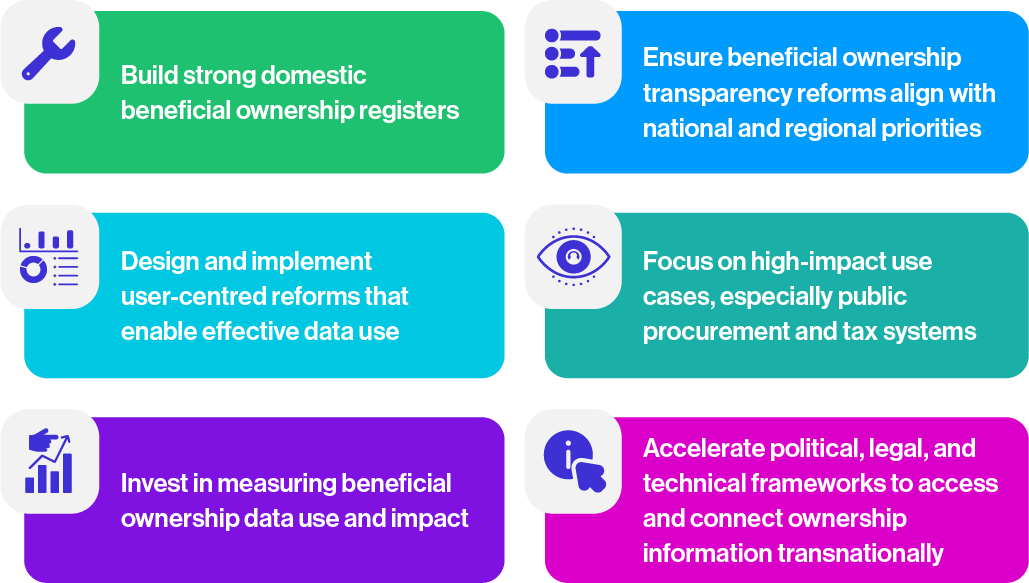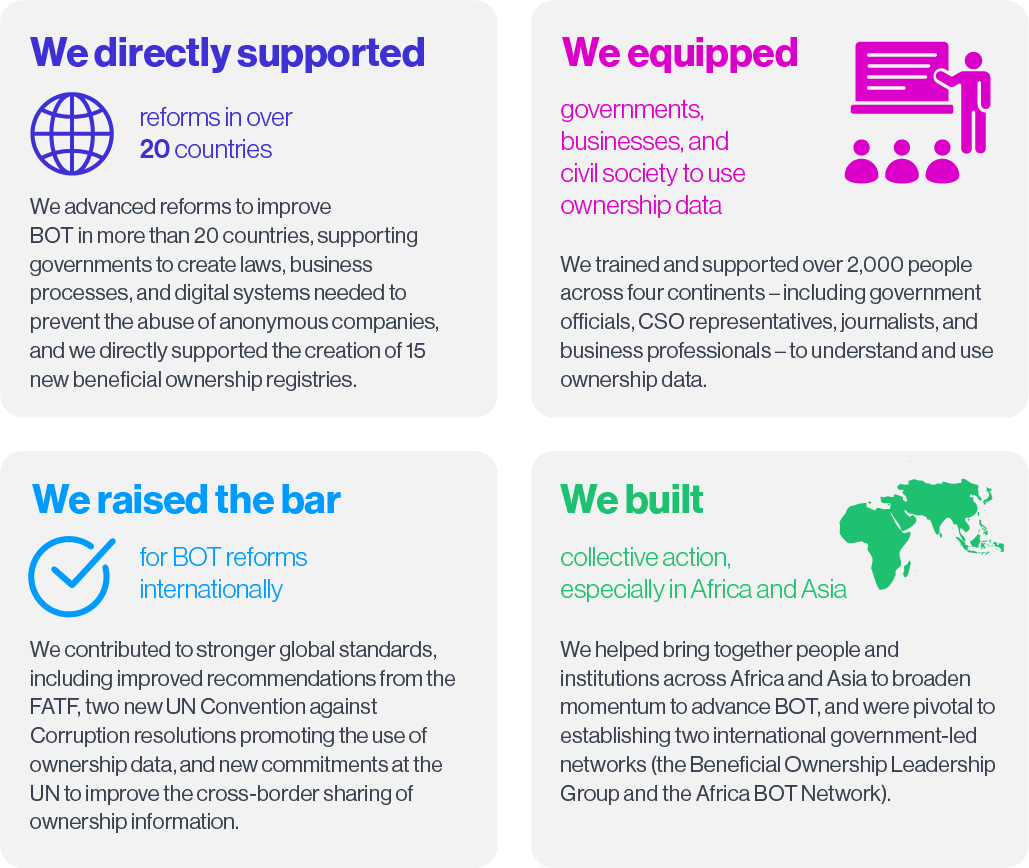From transparency to trust: Open Ownership strategy 2025 to 2030
Executive summary
Open Ownership (OO) improves accountability and strengthens financial systems, enabling governments to collect money more effectively, spend it better, and prevent it from being stolen or misused. We do this by increasing transparency and improving use of information about who really owns companies, trusts, and other legal structures. This strategy sets out how we’ll deliver impact from 2025 to 2030.
Six solutions to maximise the impact of beneficial ownership reforms

- Build strong domestic beneficial ownership registers
- Design and implement user-centred reforms that enable effective data use
- Invest in measuring beneficial ownership data use and impact
- Ensure beneficial ownership transparency reforms align with national and regional priorities
- Focus on high-impact use cases, especially public procurement and tax systems
- Accelerate political, legal, and technical frameworks to access and connect ownership information transnationally
We’ve directly supported some 40 jurisdictions to advance beneficial ownership reforms. From this experience, we know six things make reforms work – from building better registers to embedding ownership data in core public systems.
Our impact since 2022

We directly supported reforms in over 20 countries
We advanced reforms to improve BOT in more than 20 countries, supporting governments to create laws, business processes, and digital systems needed to prevent the abuse of anonymous companies, and we directly supported the creation of 15 new beneficial ownership registries.
We raised the bar for BOT reforms internationally
We contributed to stronger global standards, including improved recommendations from the Financial Action Task Force (FATF), two new United Nations (UN) Convention against Corruption resolutions promoting the use of ownership data, and new commitments at the UN to improve the cross-border sharing of ownership information.
We equipped governments, businesses, and civil society to use ownership data
We trained and supported over 2,000 people across four continents – including government officials, civil society organisation (CSO) representatives, journalists, and business professionals – to understand and use ownership data.
We built collective action, especially in Africa and Asia
We helped bring together people and institutions across Africa and Asia to broaden momentum to advance BOT, and were pivotal to establishing two international government-led networks (the Beneficial Ownership Leadership Group and the Africa BOT Network).
Since 2022,* we’ve helped deliver reforms in over 20 countries, trained thousands of people to understand and use ownership data, and shaped stronger global standards. These efforts are making ownership transparency work in practice.
Our vision for 2030
By 2030, we want beneficial ownership transparency to be mainstreamed – used routinely by governments to raise more revenue, reduce losses, and improve how public money is spent. We’ll be working directly with at least 15 countries, and internationally, and will scale our reach through partnerships.
- Government agencies design and implement user-centred BOT reforms.
- Government agencies have improved access to timely and reliable domestic and international beneficial ownership information.
- Public financial management and anti-corruption agencies institutionalise the use of beneficial ownership data.
- Stakeholders generate and use stronger evidence and impact measurements to promote accountability and shape the future of the BOT space.
- Regional and global institutions formally recognise and promote BOT and the use of ownership information to strengthen public financial management and/or tackle illicit financial flows.
Read this Executive summary as a standalone PDF here.
Notes
* OO’s previous strategy cycle was 2022–2025. See: https://www.openownership.org/documents/653/Open_Ownership_Strategy_2022-2025.pdf.